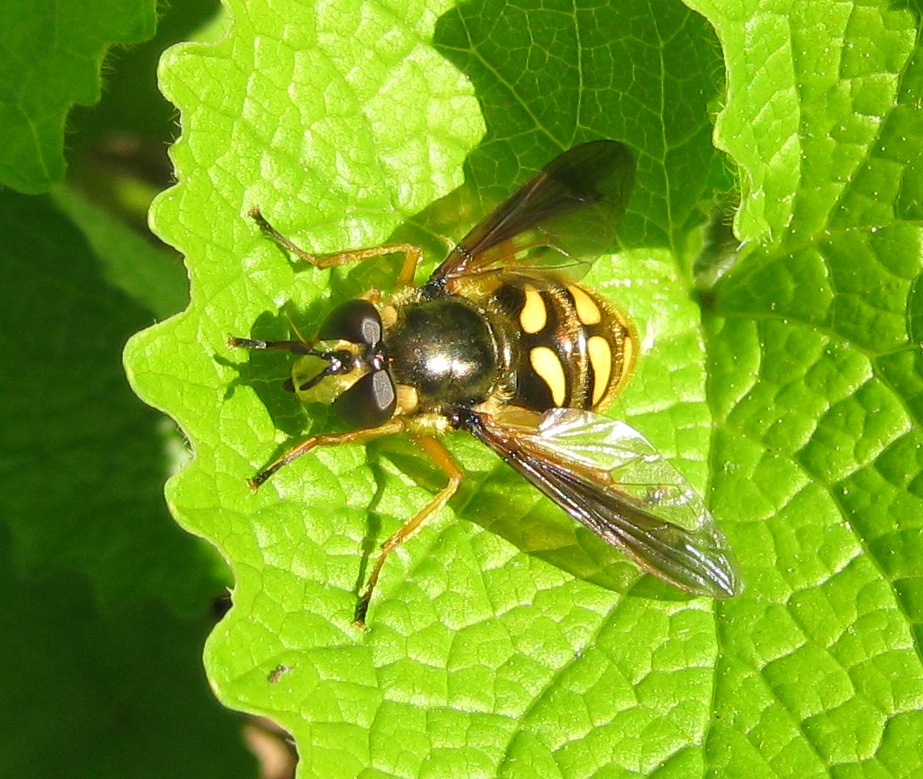|
Spilomyia Pleuralis
''Spilomyia pleuralis'' is a species of Hoverfly in the family Syrphidae. Distribution Mexico. References Milesiini Insects described in 1887 Taxa named by Samuel Wendell Williston Diptera of North America {{Milesiini-stub ... [...More Info...] [...Related Items...] OR: [Wikipedia] [Google] [Baidu] |
Samuel Wendell Williston
Samuel Wendell Williston (July 10, 1852 – August 30, 1918) was an American educator, entomologist, and paleontologist who was the first to propose that birds developed flight cursorially (by running), rather than arboreally (by leaping from tree to tree). He was a specialist on the flies, Diptera. He is remembered for Williston's law, which states that parts in an organism, such as arthropod limbs, become reduced in number and specialized in function through evolutionary history. Early life Williston was born in Boston, Massachusetts to Samuel Williston and Jane A. Williston née Turner. As a young child, Williston's family travelled to Kansas Territory in 1857 under the auspices of the New England Emigrant Aid Company to help fight the extension of slavery. He was raised in Manhattan, Kansas, attended public high school there, and graduated from Kansas State Agricultural College (now Kansas State University) in 1872, afterwards receiving a Master of Arts from that instituti ... [...More Info...] [...Related Items...] OR: [Wikipedia] [Google] [Baidu] |
Hoverfly
Hover flies, also called flower flies or syrphid flies, make up the insect family Syrphidae. As their common name suggests, they are often seen hovering or nectaring at flowers; the adults of many species feed mainly on nectar and pollen, while the larvae (maggots) eat a wide range of foods. In some species, the larvae are saprotrophs, eating decaying plant and animal matter in the soil or in ponds and streams. In other species, the larvae are insectivores and prey on aphids, thrips, and other plant-sucking insects. Insects such as aphids are considered a crop pest, and therefore the aphid-eating larvae of some hover flies serve as an economically (as well as ecologically) important predator and even potential agents for use in biological control, while the adults may be pollinators. About 6,000 species in 200 genera have been described. Hover flies are common throughout the world and can be found on all continents except Antarctica. Hover flies are harmless to most mammals, ... [...More Info...] [...Related Items...] OR: [Wikipedia] [Google] [Baidu] |
Mexico
Mexico (Spanish: México), officially the United Mexican States, is a country in the southern portion of North America. It is bordered to the north by the United States; to the south and west by the Pacific Ocean; to the southeast by Guatemala, Belize, and the Caribbean Sea; and to the east by the Gulf of Mexico. Mexico covers ,Mexico ''''. . making it the world's 13th-largest country by are ... [...More Info...] [...Related Items...] OR: [Wikipedia] [Google] [Baidu] |
Milesiini
The Milesiini (or Xylotini) is a large and diverse tribe of hoverflies. They mimic wasps or hornets. List of genera *''Aneriophora'' Stuardo & Cortes, 1952 *''Blera'' Billberg, 1820 *''Brachypalpus'' Macquart, 1834 *'' Caliprobola'' Rondani, 1845 *''Chalcosyrphus'' Curran, 1925 *''Criorhina'' Meigen, 1822 *''Cynorhinella'' Curran, 1922 *'' Deineches'' Walker, 1852 *'' Flukea'' Etcheverry, 1966 *'' Hadromyia'' Williston, 1882 *'' Hemixylota'' Shannon & Aubertin, 1933 *'' Lejota'' Rondani, 1857 *'' Lycastris'' Walker, 1857 *'' Macrometopia'' Philippi, 1865 *'' Macrozelima'' Stackelberg, 1930 *'' Malometasternum'' Shannon, 1927 *'' Matsumyia'' Shiraki, 1949 *'' Meropidia'' Hippa & Thompson, 1983 *'' Milesia'' Latreille, 1804 *'' Nepenthosyrphus'' de Meijere, 1932 *'' Odyneromyia'' Shannon & Aubertin, 1833 *''Orthoprosopa'' Macquart, 1850 *'' Palumbia'' Rondani, 1865 *'' Philippimyia'' Shannon, 1926 *''Pocota'' Lepeletier & Serville, 1828 *'' Pterallastes'' Loew ... [...More Info...] [...Related Items...] OR: [Wikipedia] [Google] [Baidu] |
Insects Described In 1887
Insects (from Latin ') are pancrustacean hexapod invertebrates of the class Insecta. They are the largest group within the arthropod phylum. Insects have a chitinous exoskeleton, a three-part body (head, thorax and abdomen), three pairs of jointed legs, compound eyes and one pair of antennae. Their blood is not totally contained in vessels; some circulates in an open cavity known as the haemocoel. Insects are the most diverse group of animals; they include more than a million described species and represent more than half of all known living organisms. The total number of extant species is estimated at between six and ten million; In: potentially over 90% of the animal life forms on Earth are insects. Insects may be found in nearly all environments, although only a small number of species reside in the oceans, which are dominated by another arthropod group, crustaceans, which recent research has indicated insects are nested within. Nearly all insects hatch from eggs. Insect ... [...More Info...] [...Related Items...] OR: [Wikipedia] [Google] [Baidu] |
Taxa Named By Samuel Wendell Williston
In biology, a taxon (back-formation from ''taxonomy''; plural taxa) is a group of one or more populations of an organism or organisms seen by taxonomists to form a unit. Although neither is required, a taxon is usually known by a particular name and given a particular ranking, especially if and when it is accepted or becomes established. It is very common, however, for taxonomists to remain at odds over what belongs to a taxon and the criteria used for inclusion. If a taxon is given a formal scientific name, its use is then governed by one of the nomenclature codes specifying which scientific name is correct for a particular grouping. Initial attempts at classifying and ordering organisms (plants and animals) were set forth in Carl Linnaeus's system in ''Systema Naturae'', 10th edition (1758), as well as an unpublished work by Bernard and Antoine Laurent de Jussieu. The idea of a unit-based system of biological classification was first made widely available in 1805 in the intro ... [...More Info...] [...Related Items...] OR: [Wikipedia] [Google] [Baidu] |




